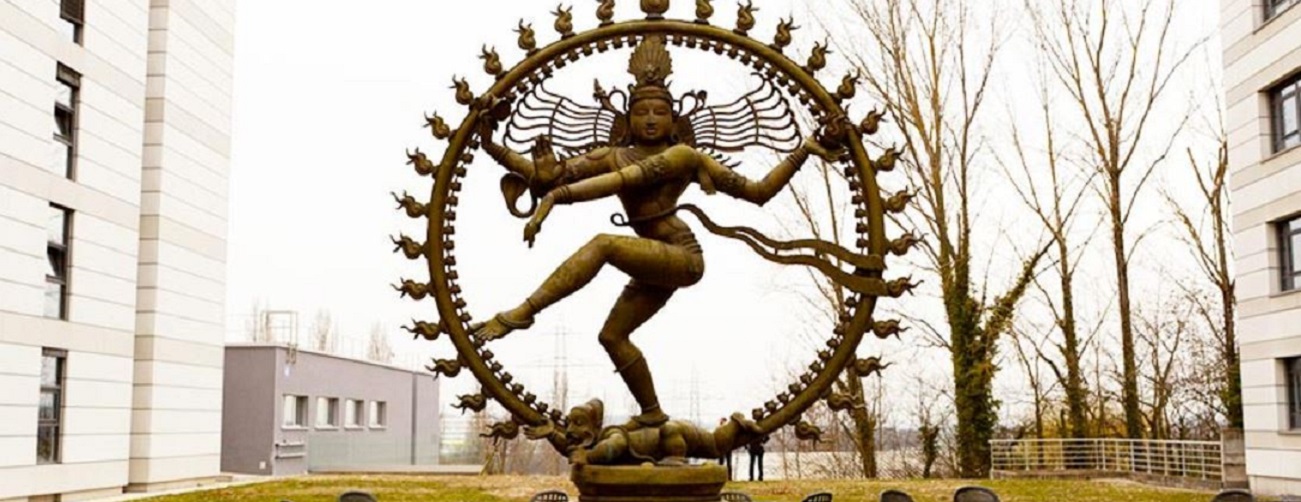Shiva- Nataraja symbolizing life force- a statue at CERN– Switzerland, one of the premiere research institutes in the world. Photo – Detechter
Indian innovation in science, technology and mathematics has dramatically shaped the world we live in today. Science and Mathematics were highly developed during the ancient period in India. Indian vedas and ancient scriptures also had information on metallurgy, algebra, astronomy, maths, architecture and astrology way before the western world knew about them.
From the birth of the mathematical concept of zero over 1,500 years ago to the modern lifesaving medical technologies India and Indians have played a huge part in framing the narrative of the history of science across the world.
Let us now take a look at some of these contributions of ancient Indian mathematicians and scientists.
Astronomy – Chandrasekhar Limit -ISRO
When we refer to neutron stars or black holes, we cannot deny the Indian influence in the most fundamental concept of Astrophysics – the famous ‘Chandrasekhar Limit‘ [6]. Indian Nobel Prize-winning physicist Subrahmanyan Chandrasekhar discovered the calculation used to determine the future of what would happen to a dying star [6]. If the star’s mass is less than the Chandrasekhar Limit it will shrink to become a white dwarf, and if it is great the star will explode, becoming a supernova. [6]
Aryabhatta – a fifth century mathematician, astronomer, astrologer and physicist and Bhaskara have done extensive work on planetary work and exploration of outer planets. Some shlokas in the Vedas mentioned about presence of water on the moon. Through Chandrayaan mission, the Indian Space Research Organisation – ISRO, the first ones to find that out.
Mathematics – Concept of Zero, Modern Decimal System, Trigonometric functions and Numeral Notation
From zero to geometry, Indian mathematicians made some great historical achievements.
The decimal place value system, which is extremely convenient for mathematical operations, gradually developed in India beginning with the Vedic period by the 9th century AD. Philosophical works such as Vyaasabhaashya on Yogasutra refer to the way the same symbol acquires different meanings in the place value system [7]. This along with the notion of zero led to the decimal place value system. [7]
Zero and its operation are first defined by Brahmagupta – a Hindu astronomer and mathematician, in 628 A.D. An inscription on a temple wall in Gwalior, India, dates back to the ninth century, and has been considered the oldest recorded example of a zero, according to the University of Oxford. Another example is an ancient Indian scroll called the Bhakshali manuscript. Discovered in a field in 1881, carbon dating has revealed that it was probably written in the third or fourth century, which pushes the earliest recorded use of zero back 500 years.
Discovery of zero enabled Aryabhatta to find out the exact distance between the earth and the moon. [1] Aryabhatta was a pioneer in the field of mathematics. The discovery of zero also opened up a new dimension of negative numerals. [1]
Aryabhatta showed that zero was not a numeral only but also a symbol and a concept. The Sanskrit word for zero, “shunya”, which is meant void or empty and derived from the word for growth, combined with the early definition found in the Rig-veda of “lack” or “deficiency.” The derivative of the two definitions is Śūnyata, a Buddhist doctrine of “emptiness,” or emptying one’s mind from impressions and thoughts. Thus Shunyata an important philosophical concept that explain the concept of creation from nothing to something and back to nothing – as nothing is permanent in life! From this philosophy, we think that a numeral to use in mathematical equations developed.
The invention of zero was a hugely significant mathematical development, one that is fundamental to calculus, which made physics, engineering and much of modern technology possible. Gift smart with these Shunya-inspired products from India at https://www.indicinspirations.com/collections/shunya-collection
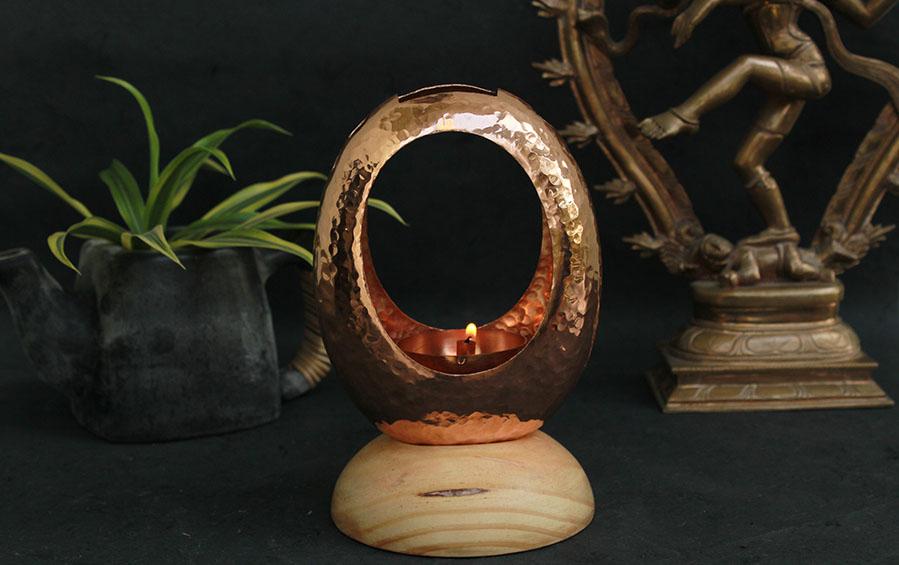
Shunya Inspired T-Light 
0 Inspired Numbers Translator 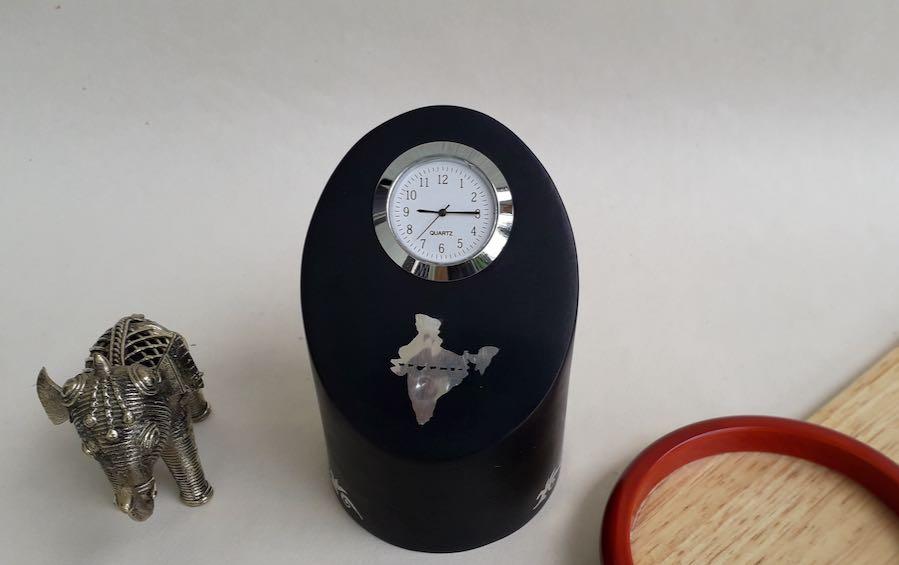
O Point – UJJAIN Prime Meridian Clock 
EINSTEIN on 0 – T-Shirt
India has expressed the ingenious method of all numbers by ten symbols – the decimal system. In this system, each received symbol is a value of the position as well as an absolute value [4]. Due to the simplicity of decimal notation, facilitates the calculation, this system made the use of arithmetic in practical inventions much faster and easier [4].
Indians, as early as 500 BCE, had developed for each number from one to nine a system of different symbols.
The functions of sine and cosine can be traced back to India. Although the study of trigonometry can be dated back to the ancient times, there is evidence that these two values were being used in the 5th century AD.
Statistics
Early origins of statistical data collection, compilation for various characteristics, and need for cross checking by an independent set of agents working under disguise are mentioned in Kautilya’s great treatise in economics, Arthasastra (attributed to 321 – 296 B.C.) [8]. Statistics, holding the hands of Prasanta Chandra Mahalanobis, baby stepped its way into the field of research in science society of India [8]. Mahalanobis was the brain behind NSSO, CSO and ISI – the Indian Statistical Institute! He is best remembered for the Mahalanobis distance – a statistical measure.
Geometry
Geometry was used to make calculations for building cities during the Harappan civilisation and the Pythagorean theorem also existed since the vedic period. Examples of geometric knowledge (rekha-ganit) are to be found in the Sulva-Sutras of Baudhayana (800 BC) and Apasthmaba (400 BC) [9]. The term Sulvasutra means “the rules of the chord”; it is the name given to the supplements of the Kalpasutras which explain the construction of sacrificial Vedic altars [9].
Since 11,000 – 10,000 BC sacred geometry – ‘Yantra’s are used as mystical diagrams to aid in meditation and deity worship. Yantra is a Sanskrit word that means “contraption” or “machine.” The Universe is a mathematical correlation between sound and form. All matter is nothing but a mathematical symmetry of vibrations and frequency of energy particles. Everything that exists in the cosmos has some size and structure – perceivable or conceptualized – in subliminal, astronomical or intermediate dimensions.
Check out our sacred geometry inspired tableware products at https://www.indicinspirations.com/collections/yantras
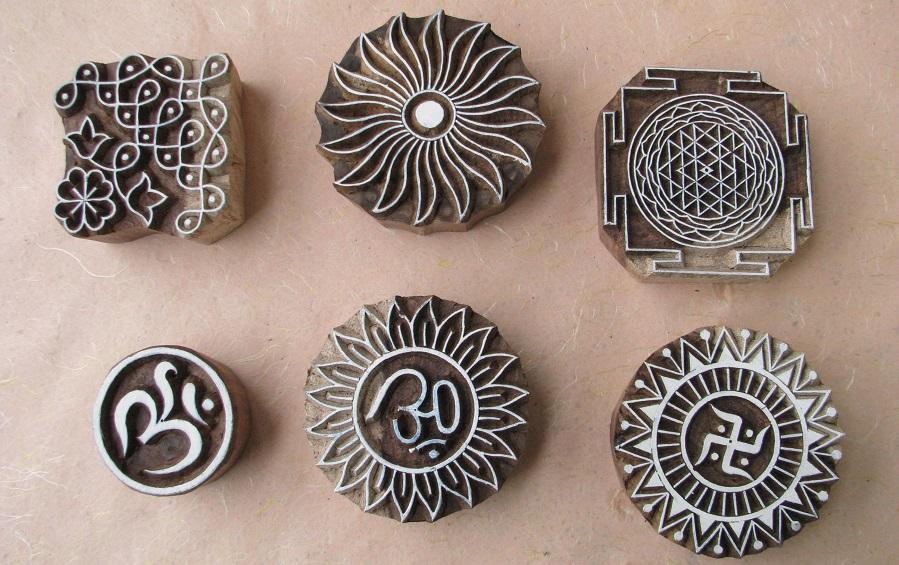
Yantra Inspired Wooden Block Printers Set 
Yantra Desktop Art 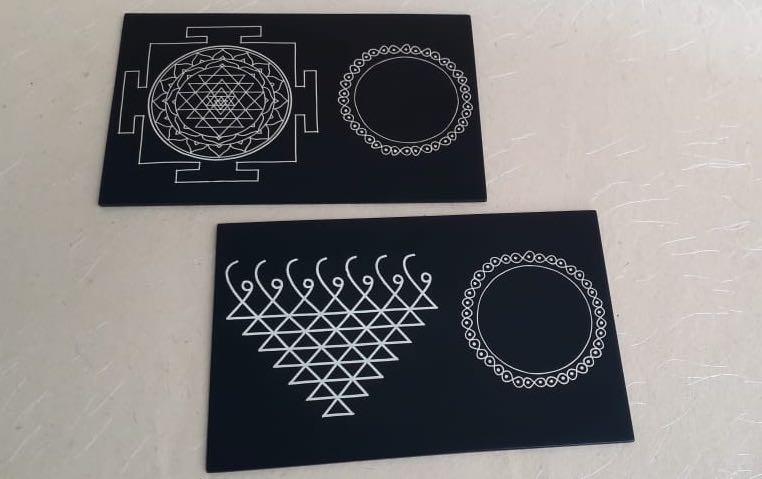
Yantra Coasters 
Sacred Geometry Inspired Conference Set cum Work From Home package
Medical Science (Ayurvada, Yoga & Culinary Science)
The Indian medical system of Āyurveda reached great heights in Vedic India, its methods including surgery and plastic surgery as well as preventive health maintenance [10]. The first cataract surgery is said to have been carried out by the ancient Indian physician Sushruta, way back in the 6th century BCE [10].
Ayurveda (the science of life) is one of the branches of Vedas and a healing science which considers food as a major therapeutic tool. This ancient Indian system of medicine not only helps in treatment of diseases but also in finding the causes and symptoms of diseases. It is a guide for the healthy as well as the sick. It defines health as an equilibrium in three doshas, and diseases as disturbance in these three doshas [1]. While treating a disease with the help of herbal medicines, it aims at removing the cause of disease by striking at the roots [1]. The main aim of ayurveda has been health and longevity. It is the oldest medical system of our planet [1].
Gift smart with these Ayurveda inspired products from India at https://www.indicinspirations.com/collections/ayurveda

Desktop Carafe
Photo- Studio Coppre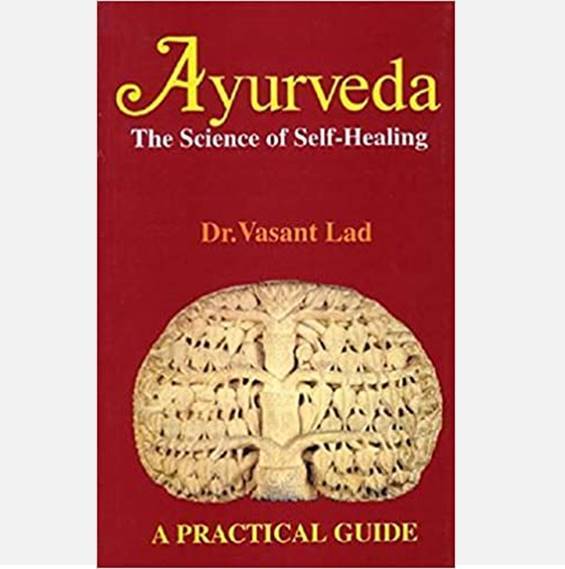
Book – Ayurveda: Science of Healing 
Book- Ayurvedic Cooking – Eat Taste Heal 
Pure Copper Water Bottle
The science of Yoga was developed in ancient India as an allied science of Ayurveda for healing without medicine at the physical and mental level [1]. Yoga is not just a physical exercise but is also a way of keeping the mental state intact. yoga has its roots in centuries of rigorous investigation and research in the East to develop an understanding of human consciousness and its potential. Yoga helps in keeping the body fit and fresh and also clears the mind from any stress which indirectly proves to be detrimental when it comes to staying healthy. Patanjali Yoga was described as very effective way to achieve good health at the international level many years ago even before it attained its current popularity.
Ayurveda recommends us to eat sattvic (pure and fresh) foods avoiding rajasic (fiery) and tamasic (spoiled) foods. Sattvic foods are fresh and light and help to clear the mind. Ayurvedic food habits help us to regularize absorption, assimilation and elimination. The role of food on the behaviour and character of a person is not negligible. As our food will be pure and natural, our brain will also be healthy and active. Ayurvedic food habits help in strengthening immune systems and assisting the gut in functioning more effectively. With a clear mind and a healthy body, one can more easily fulfil one’s soul purposes.
Scientific Thought on Plants and understanding of nature
That plants are living matters is, therefore, already an established and accepted fact for Acharya Bose. The thought could be absorbed from tradition and culture as it naturally percolated through ancient Sanskrit literature. Besides being a physicist par excellence, another remarkable contribution of J. C. Bose was that he was the first in the world to initiate interdisciplinary research by probing plants from the vantage point of physics – an integrated biophysical view of life that is in vogue [2]. He pioneered the understanding of electrical and mechanical responses to stimulation, the transmission of excitation in plant and animal tissues and in vision and memory [2]. Many of these experiments were possible because of his design and fabrication of novel instruments like crescograph, photosynthetic bubbler, soshnugraph etc [2]. All of these were made in India and some at Bose Institute. J C Bose was a pioneer in the field of wireless telecommunication – a field which would eventually lead to invention of the radio, TV, wifi and even cell phones!
Physics
The concept of atom can be traced to the Vedic times [3]. The root of the concept of the atom in ancient India is derived from the classification of the material world into five basic elements of ancient Indian philosophers [4]. These five elements’ and such classification existed since the Vedic times, prior to 3000 BC. These five elements were the Earth (Prithvi), fire (Agni), air (vayu), water (JAAL) and ether or space (aksha). Earth with smell, air with the feeling that fire with vision, flavored water and ether / space with sound: These elements were also associated with human senses [4].
CV Raman was awarded Nobel Prize for Physics in 1930 and with this, he became the first Asian to receive any Nobel Prize in Sciences.
He discovered that when light transverses through any transparent medium some of the reflected light rays changes its wavelength. He found out by experiment that the sea looks blue because of the ‘Scattering Effect of the Sunlight’ [3]. This phenomenon later came to be known as Raman scattering which is the result of the Raman effect.
Homi Jehangir Bhabha, one of the key architects of India’s nuclear-science program, founded and directed two of the institutions that would bring India into the nuclear age: the Tata Institute of Fundamental Research (TIFR) and the Atomic Energy Establishment, Trombay, later renamed the Bhabha Atomic Research Centre (BARC) in his honor [13]. TIFR remains a crown jewel of Indian science [13]. Internationally renowned in theoretical physics, mathematics, computer science, radio astronomy, and molecular biology, it attracts distinguished visitors from across the globe [13].
The European Organisation for Nuclear Research, known as CERN has a large statue of Shiva Nataraja gifted by the Government of India to symbolise that the dance of creation/destruction is the basis of the very existence of matter (image used in the banner) [12]. According to quantam field theory and modern physics, the rhythm of creation and destruction is not only a manifestation/turn of seasons in birth and death of living creatures, but also on inorganic matter for physicists [12].
Metallurgy and Engineering
Metals and related concepts were mentioned in various early Vedic age texts. Indian craftsmen’s knowledge of metallurgy predates technologies of many other civilizations. Archaeological finds from the 2nd and 3rd millennium BC testify to the antiquity of the Indian metallurgical knowledge [11]. Further, these metallurgical arts revealed the presence of a high degree of technical excellence in shaping metals and alloys in general and bronze in particular as a single system [11].
A few ancient metallurgical arts of shaping bronze, which are still being practiced namely, Aranmula metal mirror making, Kadavaloor high tin bronze eating bowl and gong making and lost wax process utilised for making icons, utensils and bells in Swamimalai and Mannar [11].

Dhokra Bell Metal Craft – a non–ferrous metal casting using the lost-wax casting technique 
Chola Bronze Sculpture using the lost wax process 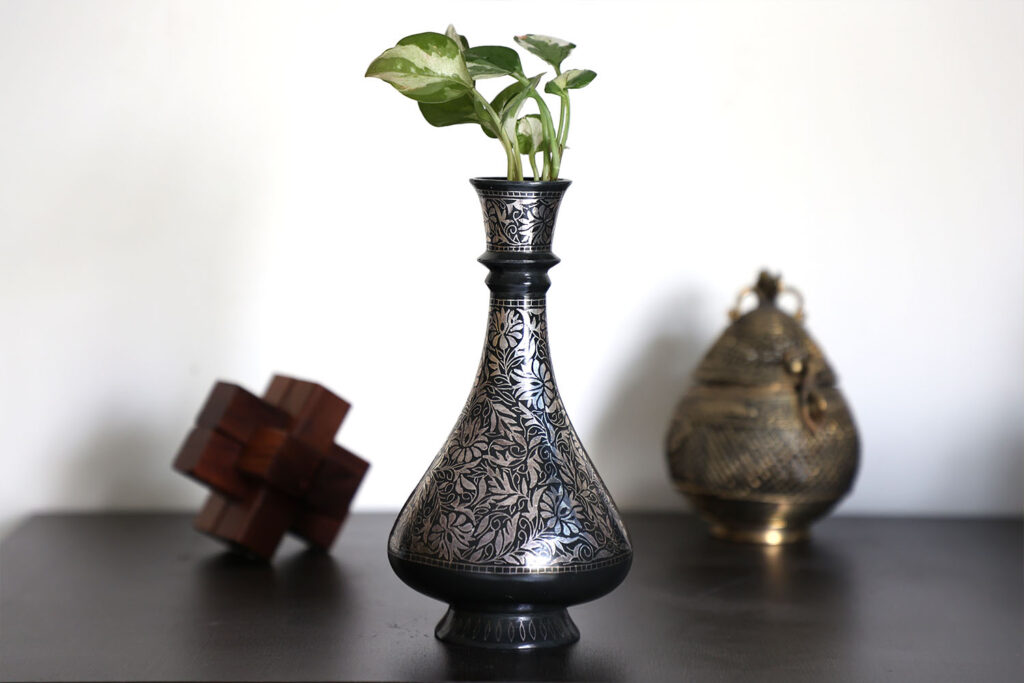
Bidri Metal Craft 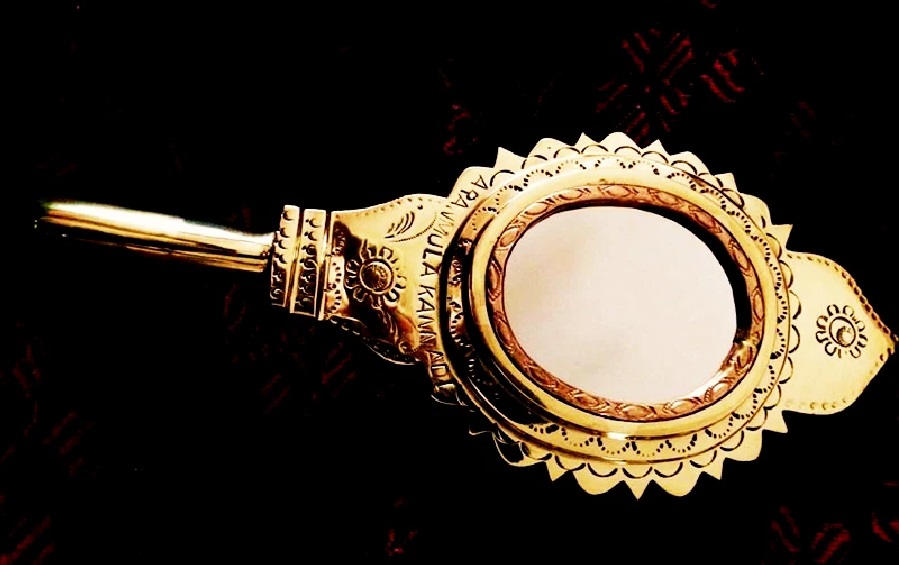
Aranmula Metal Mirror Copper & Tin Alloy
The seamless celestial globe invented in Mughal India, specifically Lahore and Kashmir, is considered to be one of the most impressive astronomical instruments and remarkable feats in metallurgy and engineering. [5]
Gift smart with our STEM-inspired products from India. Check out our collection at https://www.indicinspirations.com/collections/stem-interest. These gift items sure to “wow”, all with endless discovery possibilities.
References
- History of Mathematics & Astrology in Ancient India. By Indira Gandhi National Tribal University, Amarkantak (IGNTU). http://www.igntu.ac.in/eContent/IGNTU-eContent-378558069426-BA-AIHC-6-DrJanardhanaB-ScienceandTechnologyinAncientIndia-3.pdf
- Bose Institute. http://www.jcbose.ac.in/founder
- The Indian Contributions by Vidyarthi Vigyan Manthan. https://vvm.org.in/study_material/ENG%20-%20Indian%20Contributions%20to%20Science.pdf
- 22 Discoveries by Ancient Indian Science that Would Make You Feel Proud. By Incipientinfo. https://incipientinfo.com/discoveries-by-ancient-indian-science-that-would-make-you-feel-proud/
- Indian Astronomy. Wikipedia. https://en.wikipedia.org/wiki/Indian_astronomy
- Indian Science- The Real Marvels. By Live History India. https://www.livehistoryindia.com/snapshort-histories/2019/02/10/indian-science-the-real-marvels
- Mathematics in India in the Ancient Times. By newindianexpress.com. https://www.newindianexpress.com/opinions/2020/may/25/mathematics-in-india-in-the-ancient-times-2147540.html
- Official Statistics in India: The Past and the Present. By Talluri Rao. June 2010, Journal of Official Statistics, Indian Statistical Institute. https://www.researchgate.net/publication/286954714_Official_Statistics_in_India_The_Past_and_the_Present
- INDIAN MATHEMATICS AND PROMINENT MATHEMATICIANS by Indian Century, https://www.indiancentury.com/math.htm
- Sushruta: the father of Indian surgery and ophthalmology. By K B Kansupada, J W Sassani, National Center for Biotechnology Information. https://pubmed.ncbi.nlm.nih.gov/9476614/
- Shaping of bronze in ancient India – Some case studies from South India, December 2006, Transactions- Indian Institute of Metals, by R.M. Pillai, S.G.K. Pillai, A.D. Damodaran. https://www.researchgate.net/publication/291305011_Shaping_of_bronze_in_ancient_India_-_Some_case_studies_from_South_India
- Maha Shivratri: Here’s why world’s largest particle physics lab CERN has Shiva’s ‘Nataraj’ statue, DNA India. https://www.dnaindia.com/india/photo-gallery-maha-shivratri-here-s-why-world-s-largest-particle-physics-lab-cern-has-shiva-s-nataraj-statue-2726336
- Homi Bhabha, master builder of nuclear India by Physics Today. https://physicstoday.scitation.org/doi/full/10.1063/PT.3.4021


